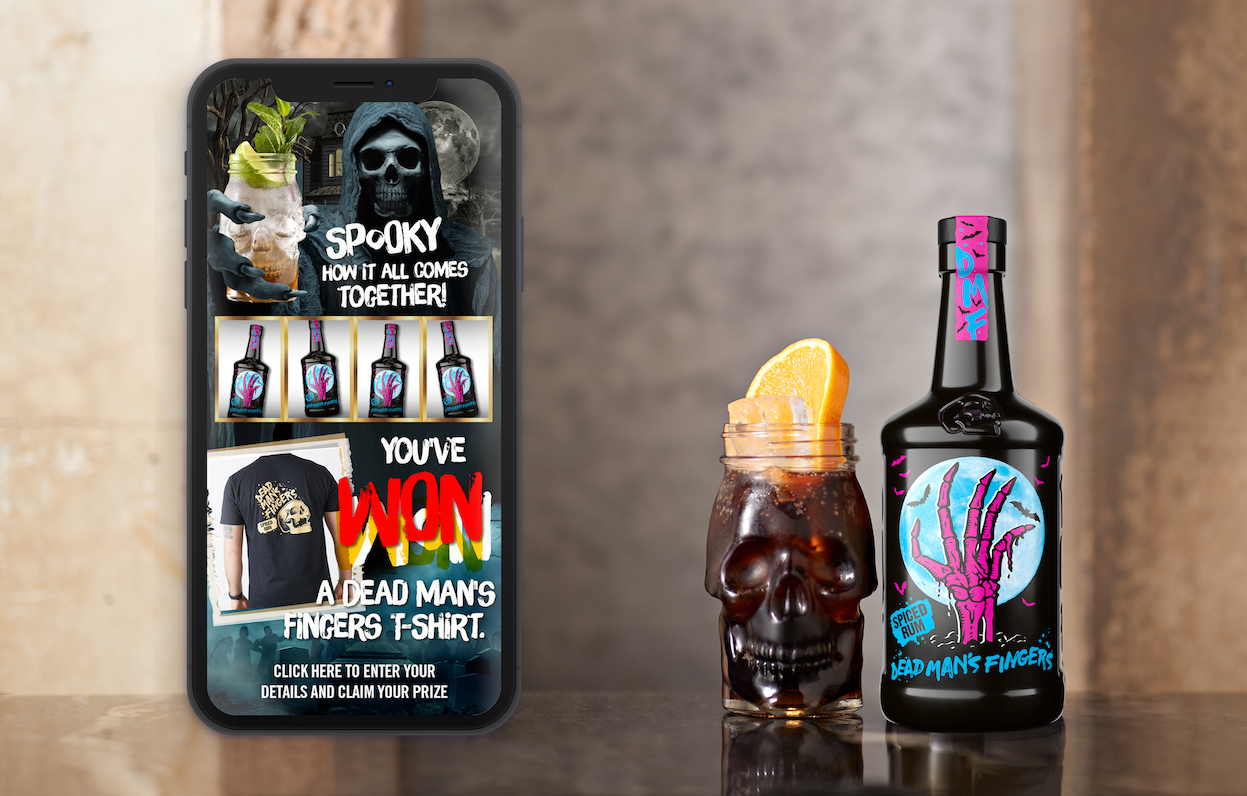Gone are the days when seasonal marketing meant simply plastering festive imagery across products and hoping for the best. Today, we’re seeing a sophisticated integration of digital experiences that transform packaging into an interactive marketing channel.
The traditional marketing calendar – from Halloween to Christmas, Back to School to Easter – is being reimagined through connected packaging strategies. These campaigns have a remarkable impact with scan rates around 14% compared to the 0.01% click-through rates of traditional digital advertising. When you consider that the average cost per digital advertising click is £1.50 and that a packaging scan is essentially free, the economic advantages become clear.
Summertime & Back to School
The summer season has proven a fertile ground for connected packaging innovation. A European fruit juice campaign that generated over 160,000 scans and collected 40,000 email addresses – offered bespoke cocktail recipes based on personality quizzes and consumption preferences.
Appetite Creative has designed three versions of this particular connected experience with functionality that allows content to be swapped out in real time. The campaign, which has been adapted for both summer and winter drinks, ran for a third time this summer due to its popularity. It offered brand new sizzling summer-themed recipes for tailored drinks, desserts, and cocktails to fit any personality type. The first summer campaign which ran in Spring/Summer 2023, generated over 160k scans, seeing 174k unique visitors and 1m 14s engagement time, with over 40k emails collected.
Back-to-school campaigns, like Gulf Union’s juice brand campaign, achieved over 97,000 scans and maintained an impressive two-and-a-half-minute average engagement time. Engagement doubled from September to October as word spread about the interactive games and AR experiences.
The holidays are coming…
The drinks spirits brand Dead Man’s Fingers created a Halloween-themed app-based game accessed via QR codes found on cocktail stirrers in over 700 UK pubs. It wasn’t just the creative execution, users scanned an average of 2.4 times each, showing strong repeat engagement.
In 2022, soft drink manufacturer Coca-Cola added QR Codes to its Christmas festive packs in a bid to reward its audience. It features a QR Code and a call to action: win £200 for your festive feast. Scanning the QR Code gave users the chance to win cash or seasonal prizes. The campaign has enabled Coca-Cola to become a core part of Christmas celebrations by turning their packaging into red-white using a gift box frame around a QR Code and leveraging custom packaging.
In 2023, Corona onboarded fashion designer Talia Coles to redesign their Corona Cans packaging. Christmas special editions of Corona beer packaging brought a festive vibe into their product and boosted seasonal sales. Additionally, they added a QR Code at the back of the can which allowed users to enter the Corona Holiday Sweepstakes website with the chance to win prizes, leading to increased QR scans.
Last Christmas, M&S’s Food and Clothing & Home Christmas campaigns appeared across multiple platforms with its first TikTok takeover and use of custom QR codes from Flowcode. Video-on-demand was a key element and M&S was the first UK retailer to use Flowcode to embed custom QR codes into these ads. Flowcode is a QR code creation service that has a specialist platform for TV and connected TV.
The adoption of connected packaging is accelerating
What’s particularly encouraging to me is the industry’s commitment to this technology. The adoption of connected packaging is accelerating at an unprecedented rate. A recent survey we carried out shows that a third (33%) of respondents will spend between $15,000 to $30,000 on connected packaging this year, with the majority (88%) planning a connected packaging campaign in 2024.
With 80% of respondents citing that connected packaging will be increasingly important to the packaging industry in the next 12 months and beyond. These numbers reflect the growing recognition of connected packaging’s potential to drive sales and engagement.
The shift from one-off campaigns to ‘always-on’ connected packaging strategies allows them to adapt in real-time at any moment during the year. Representing real engagement with consumers at crucial moments in the retail calendar. This approach allows for continuous engagement and data collection, providing brands with real-time insights into consumer behavior and preferences.
In addition, connected packaging isn’t just a standalone tool, but rather a crucial amplifier of broader marketing efforts. When combined with social media, in-store promotions, and traditional advertising, it becomes a pivotal touchpoint in driving both engagement and sales.
Last year’s M&S Christmas campaign demonstrated this integrated approach perfectly, combining its connected packaging strategy with TikTok takeovers and video-on-demand content. This multi-channel approach ensures that the connected packaging element doesn’t exist in isolation but rather serves as a crucial touchpoint in the customer journey.
What I find most compelling about connected packaging is its versatility across different seasonal contexts. Whether it’s sharing cocktail recipes during summer barbecue season, offering interactive games during back-to-school periods, or providing gift guides during the holiday season, the technology adapts beautifully to each occasion.
Looking ahead, I’m convinced that connected packaging will become an essential component of seasonal marketing strategies. The ability to provide product information, exclusive deals, and interactive experiences at the point of purchase or consumption is simply too valuable to ignore. For brands seeking to make the most of key calendar moments, connected packaging offers an efficient, measurable, and engaging way to reach consumers when and where it matters most.

